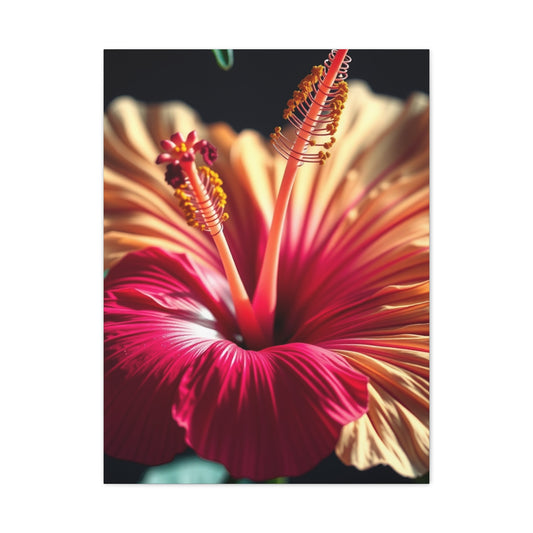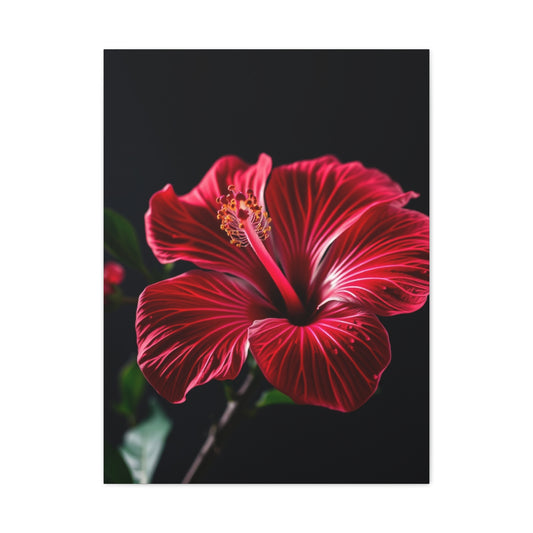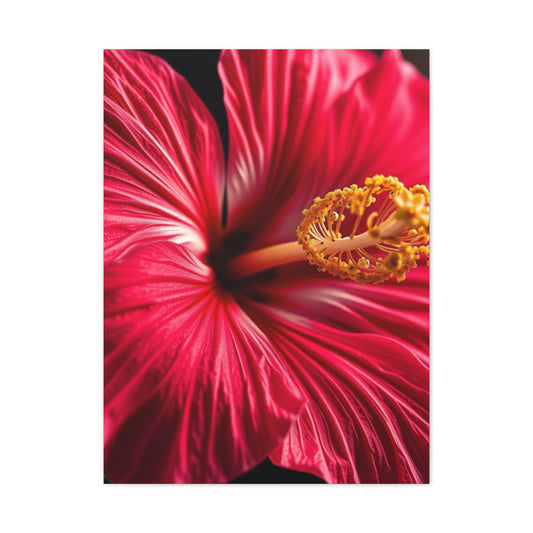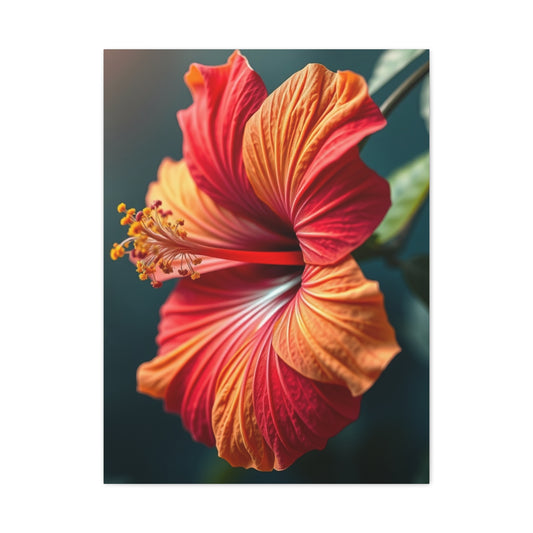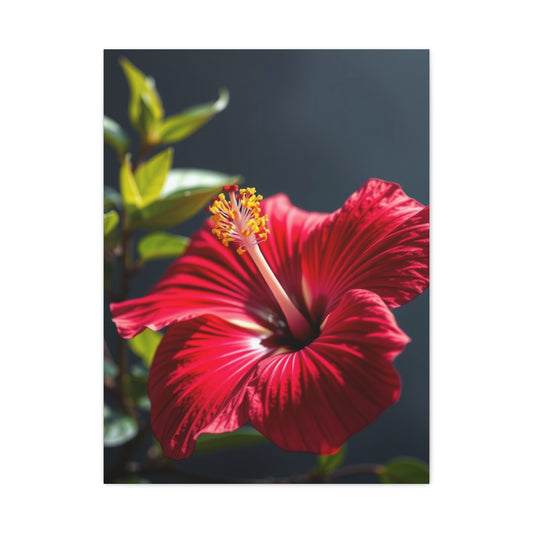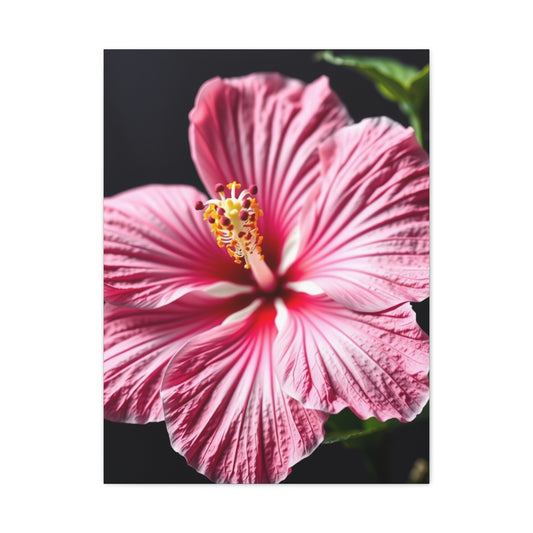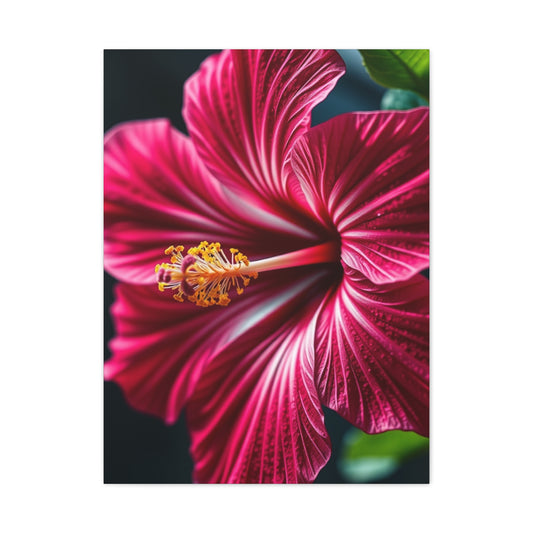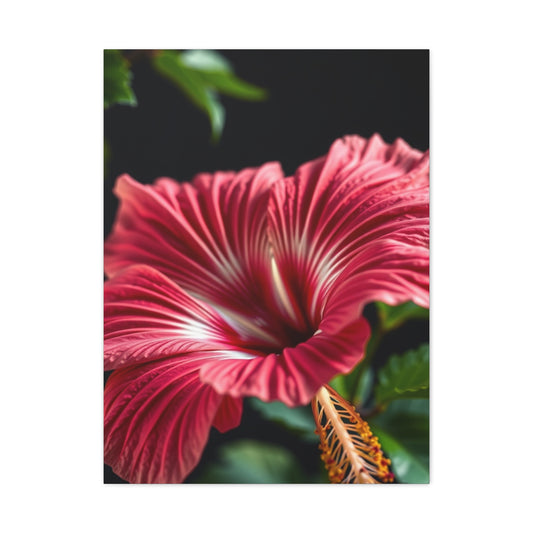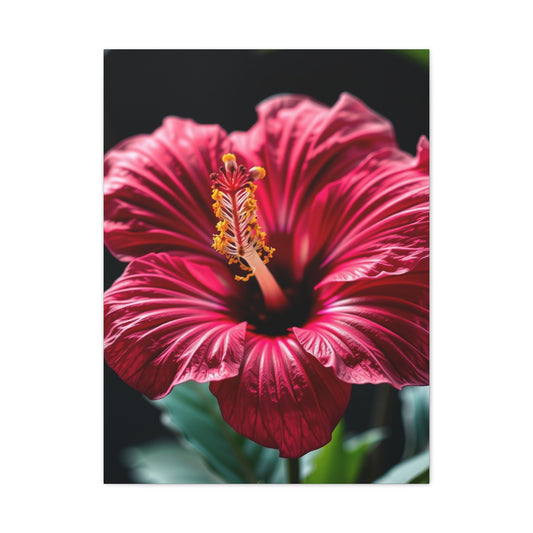Hibiscus Flower Wall Art: A Touch of Tropical Elegance
The magnificent hibiscus blossom stands as one of nature's most captivating creations, embodying the essence of paradise within its delicate petals. These extraordinary flowers have transcended their natural habitat to become a cornerstone of contemporary interior design, offering homeowners an unprecedented opportunity to infuse their living spaces with exotic charm and vibrant energy. The allure of hibiscus wall displays lies not merely in their striking visual impact but in their ability to transform ordinary rooms into sanctuaries of tranquility and beauty.
When considering the integration of hibiscus-themed decorative elements into residential environments, one must appreciate the profound psychological effects these botanical representations can produce. The warm, inviting hues characteristic of hibiscus blossoms naturally elevate mood and create an atmosphere of warmth and hospitality. These floral masterpieces serve as windows to tropical paradises, instantly transporting viewers to sun-drenched beaches and lush island gardens without leaving the comfort of their homes.
The versatility of hibiscus wall decorations extends far beyond their aesthetic appeal, encompassing a broad spectrum of design possibilities that cater to diverse tastes and interior styles. From minimalist interpretations that focus on clean lines and subtle coloration to bold, dramatic representations that command attention and serve as focal points, hibiscus-inspired wall displays offer endless opportunities for creative expression and personalization.
Embracing Paradise Through Vibrant Hibiscus Wall Displays
The journey toward creating an authentic tropical atmosphere begins with understanding the unique characteristics that make hibiscus flowers so compelling in decorative contexts. These remarkable blossoms possess an inherent ability to bridge the gap between natural beauty and artistic expression, offering a perfect balance of organic forms and vibrant colors that complement virtually any interior design scheme.
The selection process for hibiscus wall displays requires careful consideration of various factors, including color palettes, size proportions, and stylistic preferences. The broad spectrum of hibiscus varieties provides an extensive range of color options, from the classic deep reds and bright pinks to more subtle coral shades and pristine whites. Each color variation carries its own emotional resonance and design implications, allowing homeowners to create precisely the atmosphere they desire.
Large-scale hibiscus displays can serve as dramatic focal points, commanding attention and establishing the overall tone for entire rooms. These substantial pieces work particularly well in spacious areas where their impact can be fully appreciated, such as living rooms, dining areas, or grand foyers. The scale of these displays allows for intricate detail and complex color gradations that smaller pieces cannot accommodate, resulting in truly breathtaking visual experiences.
Conversely, smaller hibiscus wall pieces offer opportunities for subtle accents and layered compositions. These intimate displays can be grouped together to create gallery walls or used individually to add touches of tropical charm to specific areas. The flexibility of smaller pieces makes them ideal for spaces with limited wall area or for those who prefer a more understated approach to tropical decoration.
Creating Harmonious Living Spaces with Hibiscus Motifs
The integration of hibiscus wall displays into existing interior design schemes requires thoughtful planning and consideration of existing elements. The key to successful incorporation lies in understanding how these tropical motifs interact with other design components, including furniture, lighting, textiles, and architectural features. When properly coordinated, hibiscus wall displays can enhance and complement existing design elements while adding their own unique character to the space.
Color coordination plays a crucial role in achieving harmonious integration of hibiscus wall displays. The natural color palette of hibiscus flowers offers numerous opportunities for creating cohesive design schemes that feel intentional and well-planned. Warm coral and salmon tones pair beautifully with neutral backgrounds and natural materials, creating spaces that feel both tropical and sophisticated.
The positioning of hibiscus wall displays within rooms significantly impacts their effectiveness and visual impact. Strategic placement can enhance natural lighting, create visual balance, and establish focal points that guide the eye throughout the space. Consider the relationship between wall displays and other room elements, ensuring that the hibiscus motifs complement rather than compete with existing features.
Lighting considerations are paramount when displaying hibiscus wall pieces, as proper illumination can dramatically enhance their visual impact and color vibrancy. Natural light brings out the subtle nuances in hibiscus imagery, while carefully positioned artificial lighting can create dramatic effects and extend viewing pleasure into evening hours. The interplay between light and shadow adds depth and dimension to hibiscus displays, creating dynamic visual experiences that change throughout the day.
Transforming Residential Environments with Tropical Hibiscus Displays
The power of hibiscus wall displays to transform residential environments extends beyond mere decoration, encompassing psychological and emotional benefits that contribute to overall well-being and quality of life. The presence of floral imagery, particularly tropical varieties like hibiscus, has been shown to reduce stress levels, improve mood, and create feelings of connection with nature even in urban environments.
Living rooms represent prime opportunities for incorporating hibiscus wall displays, as these spaces serve as primary gathering areas where family and guests spend significant amounts of time. The warm, welcoming nature of hibiscus imagery creates inviting atmospheres that encourage relaxation and social interaction. Large-scale hibiscus displays can serve as conversation starters while smaller pieces contribute to overall ambiance without overwhelming the space.
Bedrooms benefit enormously from the calming influence of hibiscus wall displays, particularly when color selections emphasize softer, more muted tones. The tropical associations of hibiscus flowers can create restful environments reminiscent of peaceful island retreats, promoting better sleep and relaxation. The key lies in selecting hibiscus displays that complement rather than stimulate, using gentle colors and serene compositions that encourage rest and tranquility.
Kitchen and dining areas offer unique opportunities for incorporating hibiscus wall displays that celebrate the connection between tropical flora and culinary experiences. The vibrant colors characteristic of hibiscus flowers can stimulate appetite and create festive dining atmospheres that make everyday meals feel more special and celebratory. These spaces benefit from hibiscus displays that incorporate elements of abundance and vitality, reflecting the nourishing aspects of both food and nature.
Achieving Bold and Beautiful Interior Statements with Hibiscus Imagery
The creation of bold interior statements through hibiscus wall displays requires confidence in color selection and composition, embracing the inherent drama and vibrancy that these magnificent flowers represent. Bold hibiscus displays challenge conventional decorating wisdom by celebrating color and pattern rather than retreating into safe, neutral territories.
The selection of hibiscus displays for bold statements often involves larger scales, more saturated colors, and more complex compositions that command attention and admiration. These pieces function as artistic focal points that define room character and establish strong visual hierarchies. The key to successful bold statements lies in balancing dramatic hibiscus displays with supportive design elements that enhance rather than compete with their impact.
Color intensity plays a crucial role in creating bold hibiscus statements, with deeper reds, vibrant magentas, and electric oranges providing maximum visual impact. These intense colors work best when supported by neutral backgrounds that allow the hibiscus imagery to shine without visual competition. The contrast between bold hibiscus colors and neutral surroundings creates dynamic tension that energizes spaces and captivates viewers.
The arrangement and grouping of bold hibiscus displays requires careful consideration of spatial relationships and visual weight distribution. Single large pieces can create powerful focal points, while grouped arrangements of smaller bold pieces can create impressive gallery walls that tell complex visual stories. The key lies in understanding how bold elements interact within spatial contexts to create harmonious yet dynamic compositions.
Infusing Residential Spaces with Colorful Hibiscus Elements
The strategic incorporation of colorful hibiscus elements into residential spaces involves understanding color theory and its practical applications in interior design contexts. The natural color variations found in hibiscus flowers provide extensive palettes for creating cohesive design schemes that feel both vibrant and sophisticated.
Warm color families dominate hibiscus imagery, with reds, oranges, yellows, and pinks providing the foundation for most decorative applications. These warm tones naturally create feelings of comfort and energy, making them ideal for social spaces and areas where activity and interaction are desired. The psychological effects of warm hibiscus colors contribute to creating welcoming environments that encourage gathering and conversation.
Cool hibiscus variations, including purples, whites, and pale pinks, offer alternative color approaches that create different atmospheric effects. These cooler tones tend to be more calming and restful, making them suitable for bedrooms, reading nooks, and other spaces dedicated to quiet activities and relaxation. The versatility of hibiscus color options ensures compatibility with diverse design preferences and functional requirements.
The layering of hibiscus colors within single spaces creates depth and visual interest that prevents monotony and maintains visual engagement over time. Successful color layering involves combining different hibiscus hues in ways that create gradual transitions and harmonious relationships rather than jarring contrasts. This approach allows for complex, sophisticated color schemes that feel natural and unforced.
Cultivating Fresh and Inviting Atmospheres Through Tropical Hibiscus Displays
The creation of fresh and inviting atmospheres through tropical hibiscus displays involves more than simple color selection, encompassing composition, scale, and contextual relationships that work together to create cohesive environmental experiences. Fresh atmospheres feel light, airy, and energizing, qualities that hibiscus imagery can effectively promote when properly implemented.
The concept of freshness in interior design relates to feelings of renewal, vitality, and cleanliness that make spaces feel alive and welcoming. Hibiscus displays contribute to freshness through their associations with natural growth, seasonal renewal, and tropical vitality. These connections help create interior environments that feel connected to natural cycles and seasonal changes, even in controlled indoor settings.
Inviting atmospheres encourage occupancy and extended stays, making people feel comfortable and welcome within spaces. Hibiscus displays contribute to inviting qualities through their warm colors, organic forms, and positive associations with paradise and relaxation. The presence of hibiscus imagery suggests hospitality and care, qualities that make guests feel valued and appreciated.
The balance between freshness and invitation requires careful attention to scale, color intensity, and spatial relationships. Overly bold hibiscus displays can overwhelm smaller spaces and create feelings of enclosure rather than openness, while displays that are too subtle may fail to create the desired atmospheric effects. Successful fresh and inviting atmospheres achieve optimal balance between impact and restraint.
Perfecting Relaxed Living Spaces with Hibiscus Accents
The integration of hibiscus accents into relaxed living spaces requires understanding how these tropical elements interact with comfort-oriented design principles and lifestyle preferences. Relaxed spaces prioritize comfort, ease, and stress reduction, goals that hibiscus imagery can effectively support when properly selected and positioned.
Relaxed living spaces benefit from hibiscus displays that emphasize softer colors, organic forms, and peaceful compositions rather than high-energy, dramatic presentations. The goal is to create environments that promote unwinding and stress relief, using hibiscus imagery to enhance rather than stimulate. This approach often involves selecting hibiscus displays with muted color palettes and serene compositions that encourage contemplation and rest.
The positioning of hibiscus accents within relaxed spaces should support circulation patterns and functional requirements while contributing to overall ambiance. Strategic placement can create visual anchors that help define different functional areas within larger spaces, using hibiscus imagery to establish zones for different activities and moods. This approach allows for flexible use of space while maintaining visual coherence.
Seasonal considerations play important roles in relaxed space design, with hibiscus accents providing opportunities to introduce tropical warmth during colder months and fresh energy during spring and summer seasons. The year-round appeal of hibiscus imagery makes it suitable for permanent installation while still allowing for seasonal adjustments through complementary accessories and lighting changes.
Energizing Interior Environments with Dynamic Hibiscus Displays
The creation of energetic interior environments through dynamic hibiscus displays involves embracing the vibrant, life-affirming qualities that these magnificent flowers naturally embody. Dynamic displays capture attention, stimulate conversation, and create memorable visual experiences that enhance daily life and special occasions alike.
Dynamic hibiscus displays often feature bold color combinations, dramatic scale relationships, and complex compositions that create visual movement and excitement. These displays work particularly well in social spaces where energy and interaction are desired, such as living rooms, entertainment areas, and dining rooms. The key to successful dynamic displays lies in balancing excitement with functionality, ensuring that energetic elements enhance rather than interfere with intended room uses.
Movement and rhythm in hibiscus displays can be achieved through various compositional strategies, including repetition of forms, gradual color transitions, and strategic spacing that creates visual flow throughout spaces. These techniques help guide viewer attention while creating engaging visual experiences that reward extended observation and appreciation.
The scale relationships between dynamic hibiscus displays and surrounding architectural elements significantly impact their effectiveness and appropriateness. Large-scale displays require adequate wall space and viewing distances to be fully appreciated, while smaller dynamic pieces can create intimate energy that works well in more confined spaces. Understanding these relationships ensures optimal impact and viewer experience.
Creating Immersive Tropical Escape Environments
The development of immersive tropical escape environments using hibiscus wall displays represents the pinnacle of tropical interior design, creating comprehensive atmospheric experiences that transport occupants to exotic destinations without leaving home. These environments require careful orchestration of multiple design elements working in harmony to create convincing and emotionally satisfying experiences.
Immersive environments benefit from comprehensive hibiscus display strategies that incorporate multiple pieces, varied scales, and coordinated color schemes that work together to create unified atmospheric effects. The goal is to surround occupants with tropical beauty that feels authentic and emotionally resonant rather than superficial or decorative. This approach often involves creating visual narratives that tell stories about tropical experiences and destinations.
The layering of hibiscus imagery at different scales and distances creates depth and complexity that enhances immersive qualities. Foreground elements provide immediate impact and detail, middle-ground pieces contribute to overall composition and flow, while background elements create context and atmospheric depth. This multi-layered approach prevents visual flatness and creates convincing spatial relationships.
Lighting design plays crucial roles in immersive tropical environments, with carefully planned illumination creating mood, enhancing colors, and establishing temporal rhythms that change throughout days and seasons. The interaction between hibiscus displays and lighting creates dynamic visual experiences that maintain interest and prevent monotony over extended periods of occupancy.
Incorporating Natural Beauty Through Hibiscus Wall Displays
The integration of natural beauty through hibiscus wall displays represents a fundamental approach to biophilic design, recognizing the human need for connection with natural elements even in built environments. This approach goes beyond simple decoration to address deeper psychological and emotional needs for natural connection and environmental harmony.
Natural beauty in hibiscus displays involves more than realistic representation, encompassing qualities of organic growth, seasonal change, and ecological relationships that reflect the complex beauty of natural systems. Successful natural beauty integration creates displays that feel alive and connected to larger natural cycles rather than static and artificial.
The selection of hibiscus displays that effectively communicate natural beauty requires attention to botanical accuracy, color authenticity, and compositional relationships that reflect natural growth patterns and environmental conditions. These considerations ensure that displays feel genuine and emotionally satisfying rather than superficial or decorative.
The positioning and grouping of natural beauty-focused hibiscus displays should reflect natural growth patterns and spatial relationships found in tropical environments. This approach creates displays that feel organic and unforced, contributing to overall environmental authenticity and emotional resonance.
Maximizing Color Impact with Strategic Hibiscus Placement
The strategic placement of hibiscus displays to maximize color impact requires understanding color theory, spatial relationships, and human visual perception patterns that influence how colors are experienced within interior environments. Effective color impact goes beyond simple brightness or saturation to encompass emotional resonance and environmental harmony.
Color impact strategies often involve creating focal points that draw attention and establish visual hierarchies within rooms. Strategic hibiscus placement can highlight architectural features, define functional areas, and create visual pathways that guide movement and attention throughout spaces. These approaches ensure that color impact serves functional as well as aesthetic purposes.
The relationship between hibiscus colors and surrounding environmental elements significantly influences overall color impact and effectiveness. Colors appear different when surrounded by various backgrounds, influenced by lighting conditions, and viewed from different distances and angles. Understanding these relationships allows for more precise color planning and more predictable results.
Seasonal color considerations provide opportunities for adjusting hibiscus display impact throughout the year, using lighting changes, complementary accessories, and strategic repositioning to maintain optimal color relationships as environmental conditions change. This approach ensures sustained visual interest and appropriateness across different seasons and occasions.
Establishing Elegant Floral Statements in Contemporary Settings
The creation of elegant floral statements using hibiscus displays in contemporary settings requires balancing tropical exuberance with modern design principles that emphasize clean lines, simplified forms, and sophisticated color relationships. This balance creates displays that feel fresh and current while honoring the natural beauty of hibiscus flowers.
Contemporary elegance in hibiscus displays often involves selective editing that focuses on essential forms and colors while eliminating unnecessary complexity or ornamentation. This approach creates displays that feel refined and intentional rather than busy or overwhelming, supporting modern lifestyle preferences for simplicity and clarity.
The integration of hibiscus displays with contemporary furniture and architectural elements requires careful attention to scale relationships, material compatibility, and stylistic consistency that creates cohesive design statements. Successful integration enhances both tropical and contemporary elements rather than creating conflicts between different design approaches.
Modern technology offers new opportunities for creating elegant hibiscus statements through advanced printing methods, innovative mounting systems, and integrated lighting solutions that enhance display impact while maintaining clean, contemporary aesthetics. These technological advances allow for more sophisticated and versatile hibiscus display options than ever before.
Developing Comprehensive Tropical Design Schemes
The development of comprehensive tropical design schemes using hibiscus displays as foundational elements requires understanding how these floral motifs interact with other tropical design components to create unified and convincing environmental experiences. Comprehensive schemes address all aspects of interior environments rather than focusing on individual elements in isolation.
Successful tropical design schemes often begin with hibiscus displays as color and thematic anchors, using these elements to establish overall direction and character for entire room treatments. From these foundations, other tropical elements including furniture, textiles, lighting, and accessories can be selected and coordinated to create harmonious and convincing tropical environments.
The layering of tropical elements at different scales and intensities creates depth and authenticity that prevents schemes from appearing superficial or theme-park-like. Subtle tropical references balanced with more obvious hibiscus displays create sophisticated environments that feel genuine rather than contrived or artificial.
Geographic authenticity considerations influence the selection and combination of tropical elements, ensuring that design schemes reflect realistic tropical environments rather than generic tropical fantasies. This approach creates more convincing and emotionally satisfying environments that honor the actual beauty of tropical regions and cultures.
Optimizing Room Dynamics Through Strategic Hibiscus Integration
The optimization of room dynamics through strategic hibiscus integration involves understanding how these tropical displays influence circulation patterns, functional zones, and social interactions within interior spaces. Dynamic optimization goes beyond simple decoration to address how spaces function and feel for daily occupancy.
Circulation optimization uses hibiscus displays to guide movement through spaces, creating visual pathways that encourage desired traffic patterns while highlighting important areas and features. Strategic placement can direct attention toward focal points, encourage lingering in comfortable areas, and facilitate smooth transitions between different functional zones.
Functional zone definition benefits from hibiscus displays that help establish boundaries and character for different activity areas within larger spaces. These displays can create intimate conversation areas, define dining spaces, or establish quiet retreat zones while maintaining visual connectivity throughout larger environments.
Social interaction facilitation through hibiscus displays involves positioning these elements to support gathering areas, encourage conversation, and create memorable backdrops for social activities. The warm, inviting character of hibiscus imagery naturally supports social functions while adding visual interest that enhances social experiences.
Enhancing Architectural Features with Complementary Hibiscus Displays
The enhancement of architectural features through complementary hibiscus displays requires understanding how tropical floral elements can highlight, balance, or soften existing structural elements without overwhelming or competing with architectural character. Successful enhancement creates harmony between natural and built elements.
Architectural highlighting strategies use hibiscus displays to draw attention to interesting structural features, emphasize vertical or horizontal lines, or create visual balance for asymmetrical or challenging architectural elements. These approaches can transform potentially problematic architectural features into attractive focal points that contribute to overall room character.
Softening strategies employ hibiscus displays to introduce organic curves and natural colors that balance hard architectural lines and cold materials. This approach creates more welcoming and comfortable environments while maintaining architectural integrity and character.
Scale relationship considerations ensure that hibiscus displays complement rather than overwhelm architectural features, using proportional relationships that feel natural and harmonious. Understanding these relationships prevents displays from appearing either insignificant or dominating within architectural contexts.
Creating Cohesive Multi-Room Tropical Narratives
The creation of cohesive multi-room tropical narratives using hibiscus displays requires planning that considers how individual room treatments connect to create unified home experiences while maintaining appropriate variety and interest. Narrative approaches create homes that feel intentional and well-planned rather than randomly decorated.
Narrative development often begins with identifying common themes, color relationships, and stylistic approaches that can be adapted to different room functions and requirements while maintaining overall consistency. Hibiscus displays serve as recurring motifs that connect different spaces while allowing for appropriate variations based on specific room needs.
Transition strategies between rooms use hibiscus displays to create visual continuity that helps different spaces feel connected rather than isolated. These strategies can involve repeating specific colors, carrying similar scales between rooms, or using complementary hibiscus varieties that relate to each other while providing appropriate variety.
Climax and resolution techniques create focal point rooms that serve as destinations within overall home narratives, using more dramatic or comprehensive hibiscus displays to create memorable experiences that justify and reward progression through other spaces. These techniques create satisfying narrative arcs that enhance daily home experience.
Balancing Boldness with Sophistication in Hibiscus Displays
The achievement of balanced boldness and sophistication in hibiscus displays requires understanding how to maximize visual impact while maintaining refined aesthetic qualities that feel appropriate for adult living environments. This balance prevents tropical displays from appearing juvenile or overwhelming while preserving their energetic and uplifting qualities.
Sophisticated boldness often involves selective use of intense colors or dramatic scales balanced with areas of visual rest and refined details that demonstrate design intention and aesthetic awareness. This approach creates displays that command attention while maintaining long-term visual appeal and appropriateness.
Refinement strategies include careful attention to proportion, quality of materials and execution, and integration with surrounding design elements that demonstrate aesthetic sophistication. These strategies ensure that bold hibiscus displays contribute to rather than detract from overall interior quality and design success.
Color sophistication involves understanding complex color relationships that go beyond simple brightness or intensity to encompass subtle harmonies, unexpected combinations, and seasonal appropriateness that create interesting and emotionally satisfying color experiences.
Maximizing Small Space Impact with Carefully Selected Hibiscus Elements
The maximization of impact in small spaces through carefully selected hibiscus elements requires understanding how scale, color, and positioning strategies can create impressive visual effects without overwhelming limited square footage. Small space strategies often involve more intensive planning and more precise execution than larger space treatments.
Scale optimization in small spaces often involves selecting fewer, more carefully chosen hibiscus displays rather than attempting to include multiple elements that compete for attention and visual space. Single impressive pieces often create more impact than collections of smaller elements that create visual clutter.
Color intensity strategies in small spaces can use bold hibiscus colors to create focal points that visually expand space perception while adding energy and character that prevents small spaces from feeling cramped or boring. The key lies in balancing intensity with spatial relationships that feel appropriate and comfortable.
Positioning strategies for small spaces often involve using vertical wall space efficiently while maintaining adequate viewing distances and circulation clearances. Creative mounting and grouping approaches can maximize visual impact while respecting functional space requirements.
Developing Seasonal Flexibility in Hibiscus Display Systems
The development of seasonal flexibility in hibiscus display systems allows for year-round enjoyment while providing opportunities for variety and change that maintain visual interest over extended periods. Flexible systems accommodate changing moods, occasions, and seasonal preferences while maintaining overall design coherence.
Modular display approaches allow for reconfiguration of hibiscus elements to create different compositions and emphasis for different seasons or occasions. These systems provide variety without requiring complete redecoration, making them practical and economical for long-term use.
Lighting flexibility enables seasonal mood changes that alter the appearance and impact of hibiscus displays throughout the year. Adjustable lighting systems can create warm, cozy effects for winter months and bright, energetic effects for summer seasons while using the same basic hibiscus displays.
Accessory coordination strategies use complementary decorative elements that change seasonally while maintaining hibiscus displays as consistent foundation elements. This approach allows for seasonal variety while preserving investment in quality hibiscus displays that provide long-term value and satisfaction.
Integrating Technology with Traditional Hibiscus Display Methods
The integration of modern technology with traditional hibiscus display methods opens new possibilities for enhanced visual impact, interactive experiences, and maintenance convenience while preserving the essential natural beauty that makes hibiscus displays attractive. Technology integration should enhance rather than overwhelm natural elements.
Digital enhancement options include programmable LED lighting systems that can create dynamic color effects, seasonal timing programs, and interactive responses to occupancy or time of day. These systems can dramatically enhance hibiscus display impact while providing long-term operational convenience and energy efficiency.
Smart home integration allows hibiscus display lighting and positioning to respond to broader home automation systems, creating coordinated environmental experiences that include climate control, audio systems, and security functions. This integration creates more sophisticated and convenient living environments.
Quality preservation technologies help maintain the appearance and longevity of hibiscus displays through UV protection, humidity control, and other environmental management systems that preserve colors and materials over extended periods. These technologies ensure long-term satisfaction and value from hibiscus display investments.
Establishing Investment Value in Quality Hibiscus Display Systems
The establishment of investment value in quality hibiscus display systems requires understanding how initial costs relate to long-term satisfaction, durability, and home value enhancement that justify expenditures beyond basic decorative budgets. Quality investments provide superior results and long-term value compared to economy alternatives.
Quality assessment criteria for hibiscus displays include color accuracy and stability, material durability, construction methods, and mounting system reliability that ensure displays maintain their appearance and integrity over many years of enjoyment. Understanding these criteria helps identify displays that provide superior long-term value.
Professional installation and design consultation services add value through optimal placement, appropriate scaling, and integration strategies that maximize display impact while preventing costly mistakes or suboptimal results. Professional services often provide better results than amateur installation attempts.
Maintenance and care systems extend the life and appearance of quality hibiscus displays through appropriate cleaning methods, environmental controls, and periodic updates that keep displays looking fresh and current. Understanding proper care ensures maximum return on hibiscus display investments.
Exploring Cultural Connections and Symbolic Meanings in Hibiscus Displays
The exploration of cultural connections and symbolic meanings associated with hibiscus displays adds depth and personal significance to decorative choices while honoring the rich cultural heritage associated with these magnificent flowers. Cultural awareness enhances appreciation and emotional connection with hibiscus displays.
Symbolic meanings of hibiscus flowers vary across different cultures but generally include themes of beauty, femininity, hospitality, and spiritual awareness that add meaningful dimensions to decorative applications. Understanding these meanings allows for more intentional and personally meaningful display selections.
Cultural authenticity considerations ensure that hibiscus displays respect and honor the cultural traditions associated with these flowers rather than appropriating or misrepresenting their significance. Authentic approaches create more meaningful and respectful decorative statements.
Personal connection opportunities allow individuals to incorporate their own cultural backgrounds, travel experiences, and personal associations with hibiscus flowers into display selections and arrangements. These personal connections create more emotionally satisfying and meaningful decorative environments.
Developing Expertise in Hibiscus Display Selection and Arrangement
The development of expertise in hibiscus display selection and arrangement requires understanding design principles, practical considerations, and aesthetic evaluation criteria that enable confident decision-making and successful implementation of tropical decorating projects. Expertise development improves results while increasing personal satisfaction with decorating decisions.
Design principle mastery includes understanding color theory, proportion, balance, rhythm, and emphasis as they apply to hibiscus display selection and arrangement. These principles provide frameworks for making consistent and successful decorating decisions across different rooms and projects.
Practical consideration evaluation includes understanding space requirements, lighting needs, maintenance demands, and budget constraints that influence hibiscus display feasibility and appropriateness. Balancing aesthetic desires with practical limitations ensures successful long-term satisfaction with decorating decisions.
Aesthetic evaluation skills enable assessment of display quality, authenticity, and emotional impact that guide selection among available options. Developing these skills improves decision-making confidence while increasing satisfaction with final results.
Conclusion
The transformative power of hibiscus flower wall displays extends far beyond simple decoration, encompassing comprehensive interior design strategies that can fundamentally alter the character, atmosphere, and emotional impact of residential spaces. Throughout this extensive exploration, we have examined the multifaceted nature of hibiscus displays and their remarkable ability to bring tropical elegance, vibrant energy, and natural beauty into contemporary homes.
The journey through various aspects of hibiscus wall displays reveals the sophisticated planning and thoughtful consideration required to achieve truly exceptional results. From understanding the psychological effects of tropical imagery to mastering the technical aspects of display selection, positioning, and integration, successful hibiscus display implementation requires appreciation for both artistic principles and practical considerations that influence long-term satisfaction and effectiveness.
The versatility of hibiscus displays proves particularly noteworthy, offering solutions for diverse interior design challenges while accommodating varied personal preferences, functional requirements, and budgetary constraints. Whether creating bold focal points that command attention or subtle accents that enhance existing design elements, hibiscus displays provide flexible options that can evolve with changing needs and preferences over time.
Color relationships emerge as fundamental considerations in hibiscus display success, with the natural color palette of these magnificent flowers offering extensive opportunities for creating harmonious, energizing, and emotionally satisfying interior environments. The warm, inviting nature of hibiscus colors naturally creates welcoming atmospheres while their tropical associations provide year-round connections to paradise and relaxation.
The integration of hibiscus displays with contemporary design principles demonstrates the evolution of tropical decorating from theme-park approaches to sophisticated interior design strategies that honor both natural beauty and modern lifestyle preferences. This evolution has created new opportunities for incorporating tropical elements into diverse interior styles while maintaining aesthetic coherence and cultural sensitivity.
Scale and proportion considerations prove critical for achieving optimal visual impact while respecting architectural constraints and functional requirements that define successful interior spaces. Understanding these relationships enables confident selection and positioning of hibiscus displays that enhance rather than overwhelm existing room characteristics and intended uses.
The technological possibilities for enhancing hibiscus displays continue expanding, offering new opportunities for dynamic lighting effects, seasonal flexibility, and integration with smart home systems that increase convenience while preserving the essential natural beauty that makes these displays attractive. These technological advances suggest exciting possibilities for future hibiscus display innovations.
Quality investment principles guide decision-making processes that balance initial costs with long-term value, durability, and satisfaction considerations that justify expenditures on superior hibiscus display systems. Understanding these principles helps ensure that investments in tropical decorating provide lasting satisfaction and continued appreciation over many years of enjoyment.
Cultural awareness and symbolic understanding add meaningful dimensions to hibiscus display selection and arrangement, creating opportunities for personal expression while honoring the rich heritage associated with these culturally significant flowers. This awareness enhances emotional connection and personal satisfaction with decorating choices.
The comprehensive nature of successful hibiscus display implementation requires coordination of multiple design elements including lighting, furniture, textiles, and architectural features that work together to create unified environmental experiences. This coordination prevents decorating efforts from appearing random or superficial while ensuring maximum impact and satisfaction from hibiscus display investments.
Professional consultation and installation services provide valuable expertise that can prevent costly mistakes while ensuring optimal results that justify their additional costs through superior outcomes and long-term satisfaction. These services prove particularly valuable for complex installations or significant decorating investments.
Maintenance and care considerations ensure that hibiscus displays continue providing satisfaction over extended periods through appropriate cleaning methods, environmental controls, and periodic updates that preserve appearance and prevent deterioration. Understanding these requirements enables realistic assessment of long-term ownership responsibilities.
The seasonal flexibility possible with well-planned hibiscus display systems provides opportunities for variety and change that maintain visual interest while accommodating evolving preferences and special occasions. This flexibility adds long-term value while preventing monotony that can develop with static decorating approaches.
Small space strategies demonstrate that impressive hibiscus display impact does not require extensive square footage, with careful selection and strategic positioning enabling dramatic transformations even in compact environments. These strategies prove particularly relevant for urban living situations and budget-conscious decorating approaches.
The social benefits of hibiscus displays include their ability to create conversation focal points, enhance hospitality, and establish memorable environments that contribute to positive social experiences and lasting impressions. These social dimensions add functional value that extends beyond purely aesthetic considerations.
Environmental benefits associated with biophilic design principles suggest that hibiscus displays contribute to occupant well-being through their natural associations and stress-reducing visual effects. These benefits provide additional justification for tropical decorating investments while supporting overall health and quality of life improvements.
Future developments in hibiscus display options promise continued innovation in materials, manufacturing methods, and design possibilities that will expand creative opportunities while maintaining the essential natural beauty that makes these displays timelessly attractive. Staying informed about these developments ensures access to the latest options and capabilities.
The personal satisfaction achievable through successful hibiscus display implementation reflects the deep human connection with natural beauty and our innate desire for environments that nurture and inspire daily life. This satisfaction justifies the effort and investment required for quality tropical decorating while providing lasting rewards that enhance everyday experiences.
In conclusion, hibiscus flower wall displays represent sophisticated interior design solutions that offer remarkable potential for transforming residential environments into tropical sanctuaries that nurture, inspire, and delight their occupants. The comprehensive exploration of these possibilities reveals both the complexity and the rewards of tropical decorating done with knowledge, care, and appreciation for the natural beauty that hibiscus flowers represent. Whether pursuing dramatic transformations or subtle enhancements, hibiscus displays provide pathways to more beautiful, meaningful, and satisfying living environments that celebrate the enduring appeal of tropical paradise within the comfort and convenience of contemporary homes.

